On Monday I nominated our present, past and prospective politicians as Villain #1 in running this energy transition off the rails.
At the end of that article I noted (as I had when I spoke at the CEC’s “Clean Energy Summit” in July) a high degree of scepticism that we will achieve durable bi-partisan policy position in relation to this multi-faceted energy transition. When I made that comment in July, (to me) it seemed at odds with a more generally optimistic mood amongst the authors of what I had been reading, and what I had heard from other speakers.
Unfortunately I could not be at the AFR’s “National Energy Summit” this week in Sydney – but I am keenly interested in where the discussions have ended up. Hence, at the end of the day on Tuesday, I logged into the AFR and was greeted with the following list of articles related to energy:
I have highlighted two, in particular, that take a distinctly more pessimistic tone than I had become accustomed to reading and hearing:
- Jennifer Hewitt wrote “Energy policy stability was always remote”; and
- Mark Ludlow wrote “Energy policy stability is a ‘fairytale’”.
Sad that it might be, I do also think that it’s a more objectively realistic perspective on the chances of a real, durable evolution arising (collectively) out of all of the Parliaments that matter around the country.
| Now, “Beat up on a politician” might be a popular pastime for many – in public conversations, and in private ones. In my post on Monday, I participated in the same pursuit.
To be clear – it is very clear to me that they leave themselves very open to these criticisms levelled at them. However, if we are all honest with ourselves, we have to admit that we, the voting public, are collectively Villain #2 causing the energy policy train wreck.
In my discussion at “Clean Energy Summit” back in July, I outlined some of why I thought that this was the case. |
Not long before that talk, the following image had been posted on Twitter by an Australian who is concerned about climate change, and supports measures to tackle it:
It should be noted that the data in the chart above is US data, rather than for Australia specifically – however my sense is that Australian data would be roughly similar, at least from the perspective of the following two points.
I saw this particular tweet as very neatly combining two of the realisations i had been making in relation to the emerging train wreck, and root causes of this – hence I flagged it in my talk, and do so again now:
Realisation #1 = that, taking into account the 10 year time-range of the query, both the red and the blue lines are stubbornly stuck on about their respective levels over a decade. Two key points about this:
1a) This is despite the enormous volume of discussion and debate about the climate change, and the causes of it all over the airwaves and internet (and even a full length movie or two) over the intervening 10 year period. I find that staggering, and quite explanatory.
1b) Whilst the blue line above is slightly above 50%, and some will focus on this the more important point is there is a significant volume of people in both camps – enough, in either camp, to invoke a massive swing in an election of the day when combined with other factors. This has contributed to the see-saw of energy policy over the past decade or more.
Realisation #2 is equally important, I believe – and that is that others will view a slight change in one measure and (in my view) read it out of proportion to its real significance (with Ketan’s tweet as an example of that – with apologies to Ketan for singling him out). Another case of (in my view) “missing the wood for the trees” [LINK TO COME].
Couple these realisations with my inference that the there seem to have been disproportionately vocal groups of people at either end of the Emotion-o-meter that have been drowning out the larger volume of people in between* the two extremes and I see that we, the voting public, have stacked the odds very heavily against any chance that our political class could come together (across all parties, at state and federal level) to craft a durable, pragmatic framework through which to ensure this multi-faceted energy transition can remain on the rails.
I put the slide up in my talk at Clean Energy Summit but have since been wondering whether the distribution of representation is not a normal distribution, but whether there are disproportionately large numbers of people at both ends. Certainly there’s a loud volume emanating from the shouting match at the extremes.
* as an aside, it seems to me that a prominent example of the “middle” position seems to be the consensus emerging amongst most representative groups involved in the energy sector for a (pragmatic) “certainty of energy policy” – with statements like this first seen sometime after the SA Blackout of 28th September:
… and yet, it seems, our politicians (across all parties, state and federally) are not really hearing this message.
Its these three factors, combined together, that have led me to the perspective that we, the voting public, are Villains #2 – in that we have presented an almost intractable problem to our current crop of politicians, who have repeatedly demonstrated that they are not up to the task (and hence are Villains #1).


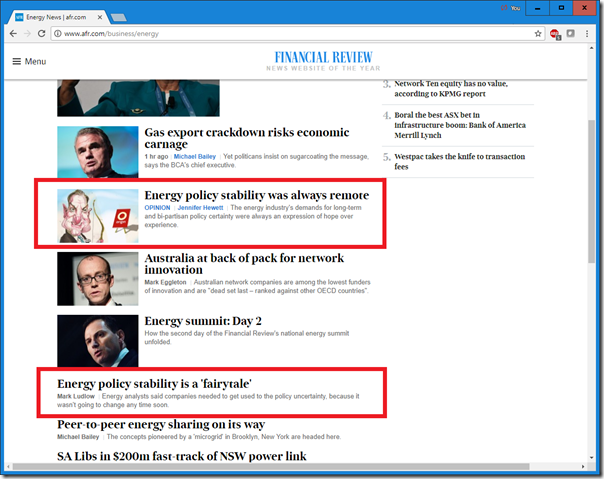
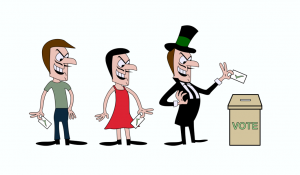
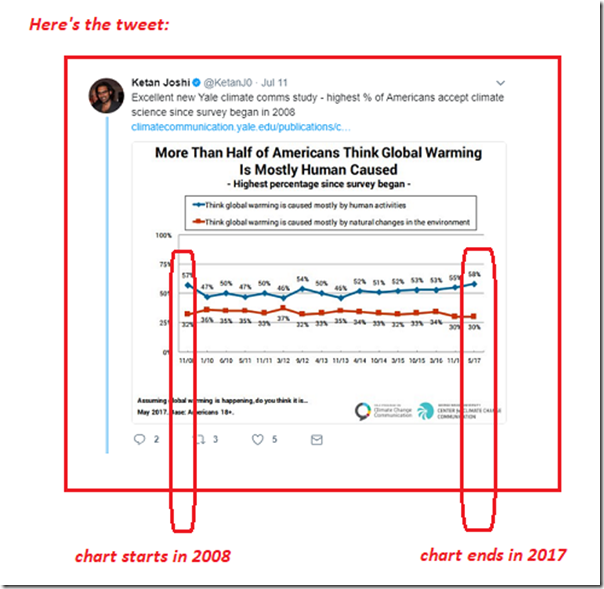
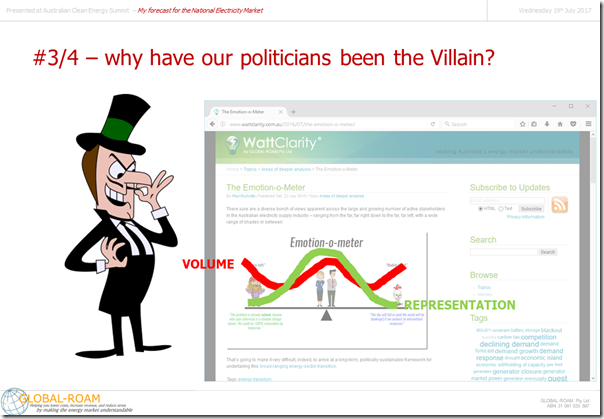
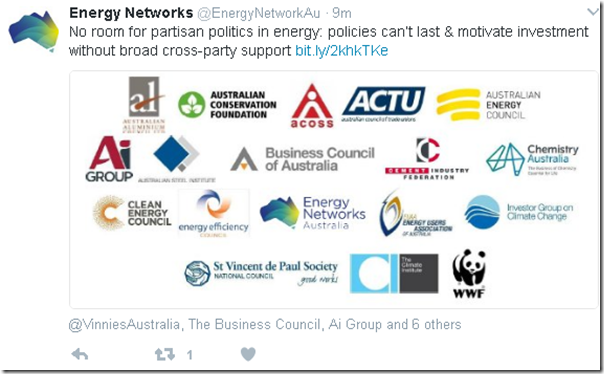
Thanks Paul – I posted a bit of a response and a link to a blog post where I wrote about this, here: https://twitter.com/KetanJ0/status/917926993785536512 also included recently updated Australian data on climate science! Hope that helps clarify my comments 🙂
Thanks Ketan!
The public has been voting for the wrong politicians. This is because the global warming debate is circuitous and opinionated. The media indulge in conducting an endless debating club competition. And the reason for this is that we did not have a Prime Minster who himself or herself would have been firm enough in climate science and educate the Parliament and the public about it. A Prime Minister should invite climatologist James Hansen to give us a lesson or two. Lateline’s Tony Jones had an interview with Jim in 2009 but he didn’t mention it in Monday’s Q&A. That’s why we are not proceeding
The real question for the blue line (and conversely the red line perhaps) is- How did you come to believe in catastrophic anthropogenic global warming? The answer lies in the lemming like belief that you can defy a fundamental axiom of engineering, namely that you can build a reliable system from unreliable componentry.
The enquirer can be fooled into thinking that most people made their decisions on a rational scientific examination of the evidence and so we’re now running an electricity grid on e-motion.
Not sure that I agree.
The real problem is that we have had a decade of poor policy decisions by politicians of both sides.
They in turn were poorly advised by Government Bureaucrats who relied on overly optimistic forecasts of gas availabliity.
Just take another look at the Eastern Australian Domestic Gas Market Study undertaken back in 2013 and you can see that there were some heroic assumptions and forecasts about gas availability and price.
Energy Users raised their concerns but they were brushed aside.
Thanks Peter
I appreciate the difference of opinion and that, in all of these sorts of discussions, there is a high degree of subjectivity involved.
I agree that poor policy decisions (over 10 years or more, at state and federal levels) has been one of the main drivers – which is why I nominated our politicians as Villain #1..
In relation to your other points, I’d just note that I haven’t finished my 10 Villains list, yet.
Paul
Paul …I posted a reply laying out why I disagree fundamentally with the explanations for the confusion and train wreck …and with the whole RE takeover of our electricity system and the destruction of Australia for what I believe is demonstrably a CAGW hoax.
Is it because my reply was too long…it WAS long because there’s a great deal more to this issue than is admitted…or was it BECAUSE I fundamentally disagree…not just at the margins.
Could you let me know please for future reference?
“They in turn were poorly advised by Government Bureaucrats who relied on overly optimistic forecasts of gas availabliity.”
But when you believe all fossil fuels need to and can be completely replaced by renewables, why would you care a jot about gas availability, anymore than coal or oil? Caring about fossil fuel availability and the price of evil is akin to heresy for true believers.
“Energy Users raised their concerns but they were brushed aside.”
Ditto. When you’ve seen the light and the way via disciples like James Hansen and know Gaia’s endless bounty of wind and sun will provide the true path to the light on the hill, naturally you have to eschew such impure thought, lest you fall into the sin of skepticism. You’re not continually having these impure thoughts and concerns like we skeptics are you Peter?
Exactly right Observa.
The RE industry and other true believers find it very easy to brush aside those little inconvenient facts like fugitive emissions of methane….which is variously described as having 80-100 times more warming capacity than CO2…is ubiquitous and very hard to mitigate…many old wells that have been shut down continuing to release it for decades.
Sierra Club at one point admitted methane was a much worse problem than CO2 but seems to have gone usefully quiet for the sake of the RE industry and the financial and other behemoths with all that investment at stake.
They can always let us know when it’s all too late…our children’s futures destroyed…Australia a 3rd world energy-poor hitherto energy superpower.
The RE industry finds it so easy to put the lid on these pesky truths because they have a completely compliant and protective LW MSM that’s always prepared to destroy a Prime Minister when it’s deemed necessary-to trash the people’s vote…eager to work their guts out to put a stake through the only legitimate PM’s heart in hopes of burying the corpse…anything to keep the heist going…the biggest money shift in history from poor to uber-rich…the millions rolling in and the populace in the dark…literally so before too long.
I’m becoming fed up with the endless prattle that spews out of print and e-media about climate change. I’m becoming more and more convinced that it is all about vested interests and greed. Take away the subsidies and watch the CE industry collapse faster than a house of cards.
Speak of the Devil and impure thoughts-
https://www.spectator.co.uk/2017/08/question-al-gore-on-climate-change-and-hell-call-you-a-denier/
According to the ACCC the breakdown of cost increases is…”made up of network costs (48 per cent), wholesale costs (22 per cent), environmental costs (7 per cent), retail costs (16 per cent) and retail profits (8 per cent).”
http://www.msn.com/en-au/news/australia/network-costs-the-main-driver-of-electricity-prices-consumer-watchdog-finds/ar-AAtup1Y
But of those ‘gold plating’ network costs and to some extent wholesale costs we have no measure of the added costs to the supply chain in managing voltage and frequency with the addition of a plethora of these disparate unreliables and we need to address that. Admiral Nelson holding a telescope to his blind eye would no doubt approve of the modus operandi here, not least with our Chief Scientist recommending all future unreliables be despatchable, but we’ll overlook the retrospectivity folks.